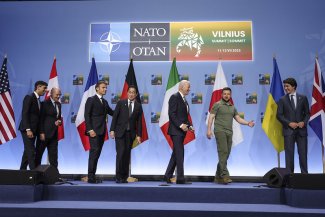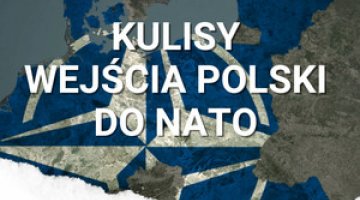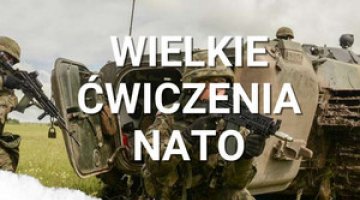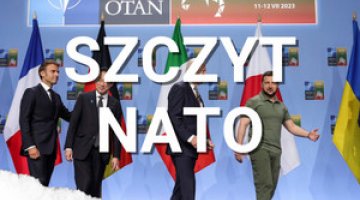NATO Summit in Vilnius: breakthroughs and unfulfilled hopes

The main topics of the NATO Vilnius Summit held on 11–12 July were deterrence and defence, Ukraine’s future membership of NATO, and deepening relations with partners in the Indo-Pacific. The Alliance is partly returning to the defence planning processes and structures that were in place during the Cold War, but which NATO abandoned in the 1990s. The adoption of three regional defence plans constitutes a structural change in NATO’s approach to collective defence, but will require implementation and funding in the years to come.
The summit was dominated by disagreements over Ukraine’s NATO membership prospects. The failure to extend Ukraine an invitation to join the Alliance and to delineate a clear path for Ukraine’s accession demonstrate the lack of consensus among the allies. The provisions of the Vilnius Summit Communiqué are disappointing for the government in Kyiv, but it will not relent in its efforts to integrate with NATO. On the sidelines of the summit the formal launch of negotiations under the umbrella of the G7 Group to formalise long-term bilateral military support for Ukraine was announced. These ‘security commitments and arrangements’ were presented as a stepping stone on the road to Ukraine’s NATO membership, but may very well provide an alternative to it in the event that the war continues for a long time and the allies remain unable to agree.
There is growing awareness within NATO of the burgeoning challenges from China and the impact of developments in the Indo-Pacific on Euro-Atlantic security. This is why the heads of state and government of Japan, Australia, New Zealand and South Korea, with whom NATO wants strengthen partnerships, were invited to the summit. However, there is no consensus among the allies on how far to develop this type of cooperation.
Deterrence and defence: implementing structural change
One of the main topics discussed during the summit was the strengthening of NATO’s deterrence and defence. The most important change in this area is the partial return to the defence planning processes and structures that the Alliance implemented during the Cold War but abandoned in the 1990s. The summit communiqué[1] reiterates the stipulations of the 2022 NATO Strategic Concept[2] that Russia is the most significant and direct threat to allies’ security as well as to peace and stability in the Euro-Atlantic area. Despite emphasising the NATO’s three main tasks of deterrence and defence, crisis prevention and management, and cooperative security – with Russia undermining the European security order, NATO will focus on the first of these. To that end, the Alliance will develop its nuclear, conventional and missile defence capabilities, complemented by space and cyber capabilities.
In Vilnius, the allies approved regional defence plans for three regions: north (the European Arctic and North Atlantic), centre (the Baltic Sea region and Central Europe) and south (the Mediterranean and Black Sea region). These plans will form the basis for the development of military forces, capabilities and exercises; the so-called new NATO Force Model agreed upon in Madrid will bring together the combat forces assigned to implement these plans. In addition, a new Allied Reaction Force is to be created to provide a rapid response to various threats in all geographical areas covered by the Alliance. On top of this, NATO Command and Force Structure will be strengthened. In particular, this concerns the three Joint Force Commands (in Norfolk, Brunssum and Naples), which will lead NATO operations in the aforementioned three regions. Furthermore, (two) army headquarters will be probably created (the Americans are likely to take responsibility for one of them). Together with the existing (multi)national corps commands (as the Multinational Corps Northeast in Szczecin) and division commands (as the Multinational Division North East in Elbląg or Multinational Division North in Ādaži, Latvia), they will be plugged into regional defence plans. Eventually specific brigades, divisions and corps should be subordinated to these structures.
However, there will be no change to the concept of stationing NATO forces on the eastern flank. Formally, NATO is sticking to permanent rotational presence of battalion-sized battlegroups (in Poland, the Baltic states, Slovakia, Hungary, Romania and Bulgaria), which can be rapidly expanded to a brigade-sized force. However, NATO will leave it up to individual allies to decide whether they want to become more involved on the eastern flank. At the end of June, Germany declared its readiness to gradually deploy a brigade of around 4000 troops to Lithuania on a permanent basis, on condition that Lithuania develop the military infrastructure there. Canada, on the other hand, announced an increase in its permanent rotational presence in Latvia (to 2200 troops over three years) immediately before the summit; together with the contribution of the other allies, this would make up a brigade-sized force. The allies decided to strengthen air defence of NATO’s territory through regular training and rotational presence of modern systems, primarily on the eastern flank.
There was also new language on nuclear deterrence, which might be linked to Russia’s threats to use nuclear weapons and deploy tactical nuclear weapons in Belarus. NATO will continue to modernise its nuclear capability and update nuclear planning, as well as ensure the broadest possible participation in the nuclear burden-sharing arrangements. The latter may signal an opening for discussions about the possibility of including Poland in this program, at least to the extent of certifying F-35 aircraft for nuclear delivery.
As important as it was for NATO to develop and adopt new regional defence plans, it will be equally important to implement them. This will depend on the political will of member states – depending, among other things, on their perception of threat emanating from Russia – to invest and modernise their own armed forces in line with NATO’s requirements and demands. This willingness will be reflected in the level of defence funding and increased arms production in NATO countries. The allies agreed in Vilnius to allocate ‘at least 2% of GDP annually to defence’, including 20% for armaments and military equipment. However, according to NATO,[3] only 11 of the 31 allies will allocate more than 2% of GDP for military purposes in 2023, even if, as agreed in 2014, all allies should have reach this ceiling by 2024. The top defence spender this year is Poland with 3.9% of GDP, followed by the US with 3.49%, Greece with 3%, Estonia with 2.7%, Lithuania with 2.5%, Romania, Finland and Hungary with 2.4%, Latvia with 2.27%, and the UK and Slovakia with just over 2%. France and Germany intend to spend 1.9% and 1.57% of GDP respectively this year. In Vilnius NATO also agreed the Defence Production Action Plan, which aims to strengthen the interoperability and standardisation of arms and military equipment in the Alliance.
Significant in the context of strengthening deterrence and defence in the Baltic Sea region was the agreement reached on the eve of the summit between Turkey, Sweden and the NATO Secretary General, on the basis of which Turkey undertook to ratify Sweden’s accession protocol as soon as possible.[4] The agreement between Sweden and Turkey included the establishment of a new bilateral format at ministerial level to discuss counter-terrorism issues; in addition, Stockholm committed to presenting an roadmap in this area, and the NATO Secretary General will appoint a special counter-terrorism coordinator. However, ratification by the Turkish (and Hungarian) parliament and Sweden’s full NATO membership will probably not be possible until the autumn at the earliest.
Ukraine: a step closer to NATO?
The second, equally important topic at the summit was Ukraine’s membership of NATO, which highlighted the divisions within the Alliance on the approach to this problem and their differences of opinion with Kyiv. The allies reaffirmed the stipulation from the 2008 Bucharest summit that Ukraine will become a member of NATO. However, an invitation to Ukraine would only be extended when allies agree and conditions are met. Ukraine will not need a Membership Action Plan (MAP) in case of a positive decision, but at the same time the allies will review Ukraine’s progress on interoperability and democratic and security sector reforms through the adapted Annual National Programme.
In order to raise the profile of political relations with Ukraine, NATO decided to transform the existing NATO-Ukraine Commission into a NATO-Ukraine Council, of which Ukraine and individual allies will be equal members. The Commission will serve as a crisis consultation mechanism between NATO and Ukraine. Individual allies (such as Hungary) will not be able to block Council meetings, as was the case with the NATO-Ukraine Commission. The first Council meeting with President Zelensky took place on the second day of the summit. On a practical level, the allies decided to expand the existing Comprehensive Assistance Package (CAP) for Ukraine by transforming it into a multi-year programme. The CAP is the main tool for NATO’s support to Kyiv. However, it is limited in size and does not include supplies of lethal arms and military equipment, which are donated by individual member states outside NATO and coordinated through the Ukraine Defence Contact Group.[5] The reason for this is the US priority of not involving NATO in any activity that Russia might be able to portray as NATO joining the war.
The communiqué’s provisions on the member states’ agreement and conditions for Ukraine’s accession reflect a lack of consensus among the allies on making an unequivocal promise of membership to Kyiv. The latter was advocated by Poland and the Baltic states among others, as they see the relatively rapid inclusion of Ukraine in Article 5 as guaranteeing long-term security in Eastern Europe and a way to limit Russia’s neo-imperial ambitions. However the United States and Germany, in particular, are much more cautious in this regard. The Biden administration took a very restrained stance, mainly emphasising the need for continued military support for Kyiv. According to Washington, Ukraine is currently not ready for membership. On the one hand, there is no consensus on the accession within NATO itself, and Ukraine’s accession in the midst of an ongoing war would mean the allies entering into conflict with Russia. On the other hand, a number of conditions needs to be met, such as the conclusion of a peace treaty ending the war and democratic reforms in Ukraine. A very similar stance was adopted by Germany, which points to the need for an end to the conflict and has called for a focus on arms supplies; on the occasion of the summit, Berlin announced a large military aid package of €700 million. For its part, France changed its position ahead of Vilnius, and now favours charting a credible path for Ukraine’s accession to NATO. However, the change in the French position may be more tactical than strategic, and Paris’s policy may depend on further developments, including the course of possible peace negotiations with Russia, in which Paris may wish to take on the role of mediator. President Emmanuel Macron also wants to rebuild France’s credibility in Central Europe and vis-à-vis Ukraine. The UK, on the other hand, makes it clear that Ukraine’s place is in NATO, although membership is not possible now that there is a war going on. The British position is slightly bolder than the US and German positions, but was expressed in more general terms.
On the sidelines of the Vilnius summit the G7 countries (the US, Japan, Germany, UK, France, Italy and Canada) issued a Joint Declaration of Support for Ukraine,[6] in which they announced the launch of negotiations to formalise long-term bilateral security commitments and arrangements to support Kyiv. Assistance from the G7 countries will be aimed at ensuring that Ukraine has the capacity to defend itself now and deter Russian aggression in the future through the continued provision of security assistance and modern military equipment, support to further develop Ukraine’s defence industrial base, training and training exercises for Ukrainian forces, and intelligence sharing and cooperation. The G7 countries also declared that they will work to strengthen Ukraine’s economic stability and resilience, and provide technical & financial assistance for Ukraine’s immediate needs and enable the further implementation of the good governance reforms necessary to advance towards Kyiv’s Euro-Atlantic aspirations. Ukraine in turn has committed to implementing law enforcement, judiciary, anti-corruption and defence reforms, among other things. Within the framework agreed by the G7, other countries can negotiate similar bilateral security commitments to support by Ukraine in the long term.
The G7 declaration formally represents the start of a discussion about the long-term commitments of the largest Western countries, but not about actual security guarantees for Ukraine. Although this was not stated in the declaration, the concept was presented as a stepping stone to Ukraine’s NATO membership – but could equally well serve as an alternative to it in the event of a protracted war and a lack of consensus within the Alliance. The G7 could then become a more important forum than NATO for agreeing on Ukraine’s future security status. Furthermore, it will be a challenge to ensure an adequate level of military support to Ukraine and its funding in the short, medium and long term, as this is linked to the diminishing reserves in the armed forces of the allies and a lack of major military procurement decisions on their part. In addition, it will be necessary to enshrine the commitment to long-term support for Ukraine in the individual national legal systems in such a way that it will not be contested during possible changes of government in the future.
The provisions of the Vilnius summit declaration – the absence of an invitation to join NATO or the delineation of a clear path to membership – have caused some dissatisfaction in Kyiv. Among the reasons for the Ukrainian government’s particular disappointment, one element which has unofficially been mentioned is the US’s possible wish to leave the option of Ukraine’s membership as a bargaining chip in future peace negotiations with Russia. President Zelensky’s harsh criticism of the provisions of the summit communiqué before its publication was an attempt at bringing public pressure to change NATO’s decision. At the same time his words were addressed to the Ukrainian public, which was expecting a fast accession path (such hope has been expressed by a record 89% of the Ukrainian population). Kyiv played hardball in an attempt to seize the momentum and make the prospect of membership as realistic as possible. When this failed, it changed to a more conciliatory tone, emphasising positives such as the abandonment of the MAP, the establishment of the NATO-Ukraine Council and the G7 declaration of long-term military assistance. Despite the summit’s results being more modest than expected, the government in Kyiv will not relent in its efforts to integrate with NATO, and will regard the ‘conditions’ indicated in the declaration as strictly security-related, while opposing their expansion and politicisation. For its part, Russia is pleased that disagreements within the Alliance and between NATO members (led by the US) and Kyiv over the prospects of Ukrainian accession have surfaced. It hopes that the mutual disappointment will grow, thus worsening the atmosphere for long-term support for Ukraine. The Kremlin has interpreted the cautiousness and vagueness of the NATO communiqué as a sign that Russia’s deterrence strategy is proving effective. Moscow apparently believes that the issue of Ukraine’s membership of NATO could become a bargaining chip in their future talks on a comprehensive resolution of the conflict.
An increasingly important Indo-Pacific
NATO’s policy towards China and the Indo-Pacific region was another important topic in Vilnius, although it was less prominent due to the focus on NATO-Ukraine relations. This was the second time in NATO’s history that the heads of state and government of the four Indo-Pacific (AP4) partners – Australia, Japan, New Zealand and South Korea – had attended NATO summit. The AP4 were invited not only to show their support for Ukraine and opposition to Russian aggression, but more importantly to emphasise cooperation on containing China’s aggressive policies in the Indo-Pacific region.
On China, the summit declaration reiterates the provisions of the 2022 Strategic Concept, declaring that Beijing’s stated ambitions and coercive policies challenge interests, security and values of the allies. The PRC employs a broad range of political, economic and military tools to increase its global footprint and project power, while remaining opaque about its strategy, intentions and military build-up. From NATO’s perspective, Beijing is using its economic leverage to create strategic dependencies. At the same time, NATO remains open to ‘constructive engagement’ with the PRC involving the building of reciprocal transparency. In Vilnius, the allies addressed three issues that had previously appeared more vaguely in official NATO documents. First, greater attention was paid to the deepening of the strategic partnership between the PRC and Russia – both countries jointly attempt to undermine the rules-based international order. Secondly, NATO is increasingly concerned about the untransparent expansion and diversification of China’s nuclear arsenal and delivery systems. Thirdly, according to the declaration, the Indo-Pacific is of importance to NATO as developments in that region can directly affect Euro-Atlantic security.
NATO’s stance towards Beijing has evolved in recent years. China was first mentioned in the 2019 NATO Summit Declaration, and over the following years the Alliance’s official language on Beijing’s policies has been developed and tightened, largely due to pressure from Washington. However, not much action followed. To counter the PRC’s growing influence, the allies now want to strengthen cooperation with the AP4 partners. NATO’s links to these countries had been developed before, but with the challenge of China they gain a new dimension. In previous years, when the NATO’s focus was on crisis management operations, Australia, Japan, New Zealand and South Korea had been involved in NATO operations in Afghanistan and Iraq to a various degree. Now NATO wants to develop a new type of partnership with these countries (within the Individually Tailored Partnership Programme, ITPP), extending the scope of cooperation into new areas such as cyber security, arms control, new technologies and counter-terrorism. NATO concluded such partnerships with South Korea and Japan in Vilnius; the respective agreements are being worked out with Australia and New Zealand.
While NATO has no plans for military engagement in the Indo-Pacific region and is focusing on strengthening cooperation with the AP4 in non-military areas, its developing relationships with Australia, Japan, New Zealand and South Korea has raised concerns from some allies. On the one hand, strengthening relationships with regional partners to contain China could be interpreted as a certain distraction from collective defence in Europe, where Russia is the main threat. On the other hand, the European and Indo-Pacific theatre appear increasingly interlinked. The failure of the Indo-Pacific deterrence strategy and China’s increasingly aggressive stance towards Taiwan may result in offensive action in Europe being taken by Moscow, which will want to take advantage if Washington redirects its attention and resources to East Asia. Prior to the summit, France had expressed its opposition to the opening of a NATO liaison office in Japan, not so much because of its attachment to strengthening collective defence in Europe, but because of its reluctance to antagonise China and get NATO more involved in the region. In the absence of a consensus on this issue, the NATO liaison point run by the Danish embassy will continue to operate in Japan for the time being.
[1] ‘Vilnius Summit Communiqué’, NATO, 11 July 2023, nato.int.
[2] NATO 2022 Strategic Concept, NATO, 29 June 2022, nato.int.
[3] Defence Expenditure of NATO Countries (2014–2023), NATO, 7 July 2023, nato.int.
[4] ‘Press statement following the meeting between Türkiye, Sweden, and the NATO Secretary General’, NATO, 10 July 2023, nato.int.
[5] The CAP was established at the 2016 Warsaw Summit to bring together under one roof all present and future initiatives to support Ukraine. The CAP’s main objective is to support Ukraine on the path to reforming its armed forces in line with NATO standards and achieving interoperability with the Alliance. One component of CAP is the so-called Trust Funds, of which those still active are focused on three areas: Command, Control, Communications and Computers (C4), medical rehabilitation and military career transition.
[6] ‘Joint Declaration of Support for Ukraine’, Prime Minister’s Office, 12 July 2023, gov.uk.




